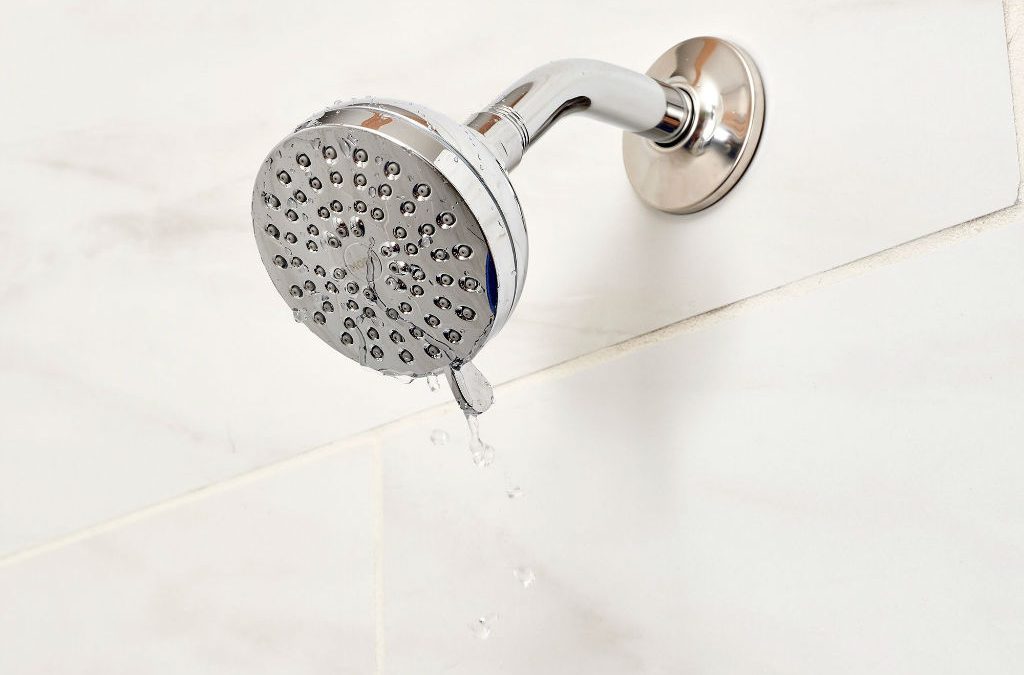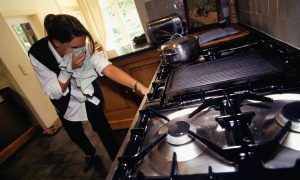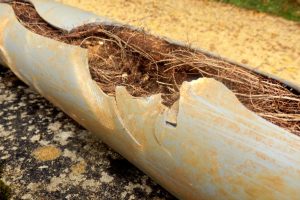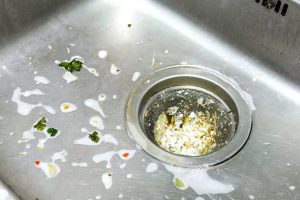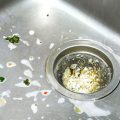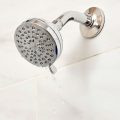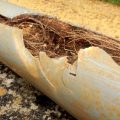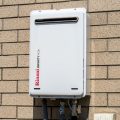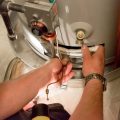Is a leaking shower head in your bathroom getting on your nerves? It’s not just annoying – that persistent drip is also trying to tell you something about your plumbing.
While a simple and easily-fixable worn-out washer is the usual suspect, it’s far from the only possible cause. In fact, that leaking dripping head when the water is off could be signalling something quite a bit more serious happening behind the scenes.
So here at Static Plumbing, we’ve broken down the 10 causes of a leaking showerhead, ranked from least to most concerning. Whether it’s a minor quirk or a sign of deeper damage, you’ll know what to look out for – and when to call in a professional.
10. Residual water in the shower arm
Let’s start with something ultra-harmless.
After a shower, it’s perfectly normal for a bit of water to remain in the shower arm or the head itself. Gravity does its job, and the remaining water slowly drips out.
So if your leaking showerhead stops after a few minutes and doesn’t reappear until the next shower, this may be all it is.
WHAT TO DO: Nothing! It’s not a fault – just physics.
9. Limescale & debris buildup
If your shower head is leaking even when it hasn’t been used recently, mineral buildup might be messing with the internal seals or flow restrictors. Hard water areas are particularly prone to this.
WHAT TO DO: Try soaking the shower head in vinegar to dissolve mineral deposits. If that doesn’t work, it may need replacing or further inspection.
8. High water pressure
Excessive pressure can cause water to push past seals even when taps are turned off, resulting in a shower head dripping when off – especially at night when overall usage in the area is low.
WHAT TO DO: Have your home’s water pressure tested. A pressure-reducing valve may solve the issue – or prevent future damage elsewhere.
7. Worn O-ring or washer
This is the classic cause of a leaking shower head – and often the first thing a plumber checks. The small rubber washer or O-ring inside your tap handle forms the watertight seal that prevents drips. When it wears out, water sneaks through.
WHAT TO DO: Washers and O-rings are cheap and can be replaced fairly easily – even DIY. But if you’re not comfortable with tools, a plumber can sort it quickly.
6. Misaligned or poorly installed tap components
Sometimes, your plumbing might be working against itself. Misaligned handles, an incorrectly installed mixer tap, or a loose cartridge can all interfere with proper shut-off, leading you to ask, ‘why is my shower head leaking?’ when everything looks absolutely fine.
WHAT TO DO: If you’ve recently had work done or a DIY job in the bathroom, a professional inspection might be worthwhile.
5. Faulty mixer cartridge
Modern mixer showers use a cartridge to balance hot and cold water. When it starts to fail, it may no longer form a complete seal – allowing water to seep through and create a dripping shower head even when turned off.
WHAT TO DO: Cartridges are replaceable, but every model is different. A licensed plumber will identify and install the right part.
4. Worn or damaged valve seat
The valve seat is the part of the tap where the washer presses to stop water flow. Over time, it can become corroded or pitted – especially in older plumbing systems – leading to ongoing leaks.
WHAT TO DO: This typically requires disassembly and potentially regrinding or replacing the valve seat. It’s a job for a professional.
3. Faulty diverter valve
In shower-over-bath setups, a diverter valve directs water either to the bath spout or the shower head. If the valve wears out or sticks, you’ll get continuous dripping from the shower head, even when using the bath.
WHAT TO DO: Diverter valves can often be repaired, but in some cases may need full replacement.
2. Leaking behind the wall
Now we’re getting into serious territory. If none of the visible components are to blame, your leaking shower repair might involve what’s hidden behind tiles. A slow leak in the pipes or seals can lead to water pooling inside the wall cavity – with the only visible sign being a persistent drip from the shower.
WHAT TO DO: This is a red flag. Contact a plumber immediately for leak inspection and shower leak repair – before serious water damage or mould sets in.
1. Thermal expansion or pressure relief fault
Some hot water systems – particularly older models – build up pressure when heating, which is normally managed via a pressure relief valve. If this fails, pressure can force hot water to seep up through the shower even when it’s not in use.
WHAT TO DO: This isn’t just a shower issue – it may indicate a broader hot water system fault. A licensed plumber can determine if your system needs adjustment or repair.
How to fix a leaking shower head … The smart way
Now that you know the possibilities, the question becomes: how to fix leaking shower head problems properly, once and for all?
Sometimes – even usually – it’s as simple as changing a washer. Other times, it requires specialised tools, testing equipment, and knowledge of your home’s water system. If you’re not sure what you’re dealing with – or don’t want to risk making it worse – we recommend calling in a licensed expert.
At Static Plumbing, our friendly team provides thorough assessments, honest advice, and long-term solutions for leaking showers. Whether it’s a simple fix or something more involved, we’ll get to the root cause – not just the symptoms.
Need help with your leaking shower?
Still wondering how to fix a dripping shower head? Or just want the job done right the first time? No matter what, we’re here to help. Our friendly, fully-licensed plumbers offer fast and reliable leaking shower repair across Brisbane Northside, Moreton Bay, and the Sunshine Coast – and beyond.
Call Static Plumbing today for expert shower leak repair, honest advice, and guaranteed workmanship. We’re always here when your dripping shower head becomes too much to ignore for a minute longer.

